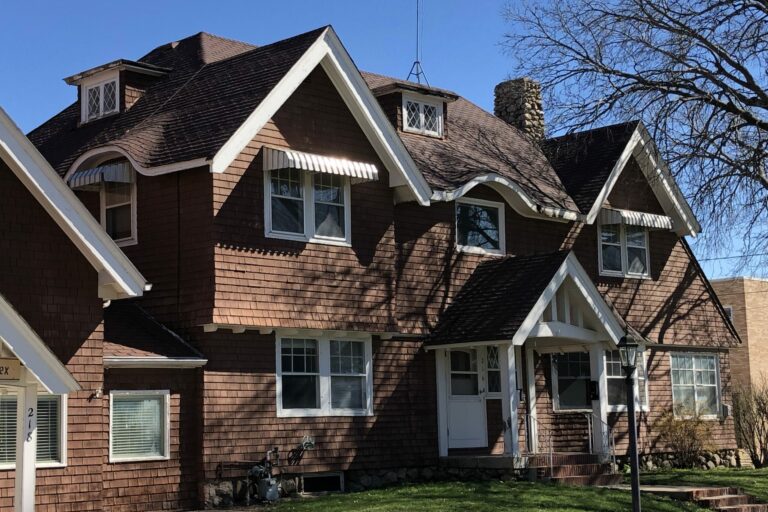
the house at 5th and cedar
The summer home of William H. Edmunds was built in 1904, at the NE corner of 5th and Cedar in Yankton, SD, reportedly on the site of a pioneer hotel. The house was designed by architect William Northrop Dudley and built by Frederick Burgi. Considered to “be one of the finest residence in the city” at its time, the Edmunds’ residence was featured on multiple postcards (below).
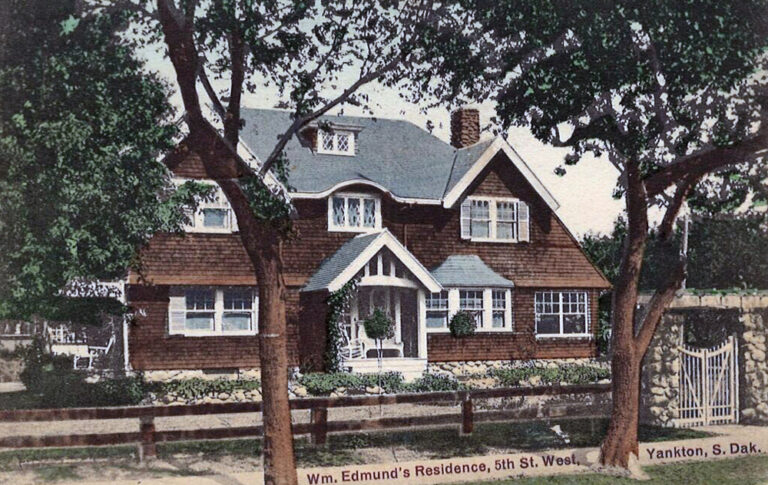
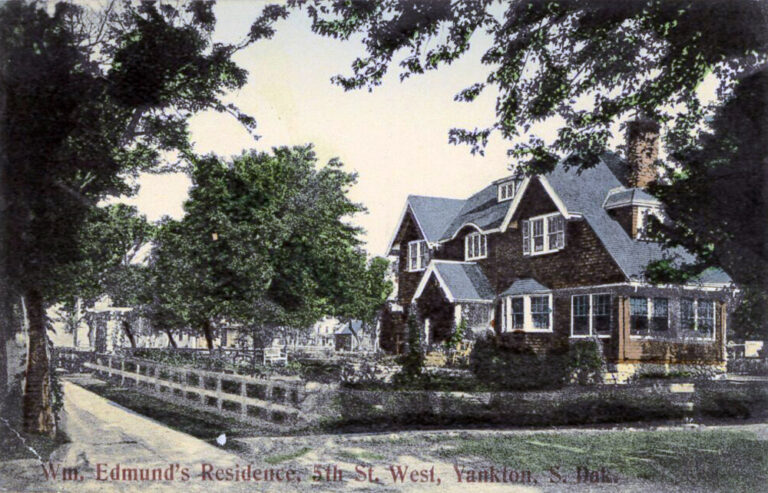
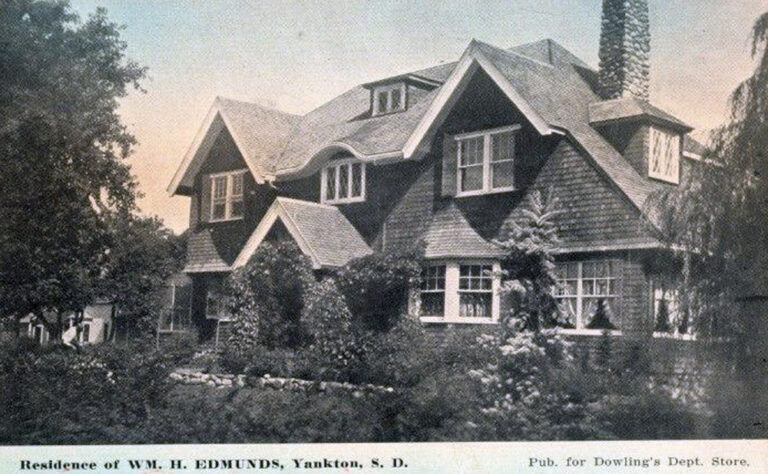
The design of the home appears to be a replica of architect William Northrop Dudley’s own residence in Belmont, Massachusetts. The Dudley house was featured in many publications, including House Beautiful in 1908 and a 1910-1920 Sherwin Williams exterior paint ad (below).
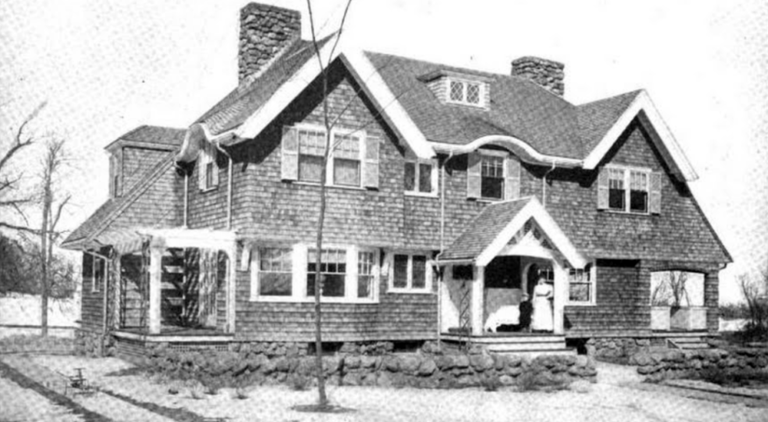
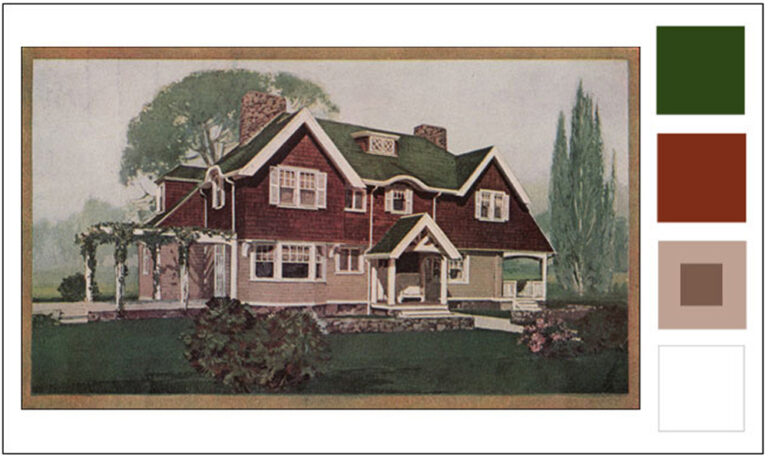
William H. Edmunds was born in Ypsilanti, Michigan on December 7, 1854 to Newton and Margaret F. (Heartt) Edmunds, natives of New York. William was the third of seven children.
His father Newton arrived in Dakota Territory in 1861 after being appointed as chief clerk in the surveyor-general’s office. Edmunds was appointed Governor of Dakota Territory by President Abraham Lincoln after receiving strong support from former Governor William Jayne. He took the oath of office on November 2 and was joined by his family in 1864. Edmunds helped establish a public school system as well as a regular revenue system in Dakota Territory. He also promoted advanced farming techniques and successfully introduced sheep to Dakota Territory in 1865.
Edmunds also believed that warring conditions with the Indians in the territory impeded white settlement by creating a negative public perception of Dakota Territory. In October 1865, Edmunds and his commission began to negotiate with Indian tribes located along the Missouri River; and eventually, the commission reached treaty agreements with thirteen tribes. Dr. Walter A. Burleigh opposed Governor Edmunds’ peace policy with the Indians, recommending that Edmunds be dismissed from office, claiming that Edmunds had mismanaged Indian Affairs with a scheme to steal money from the Indian Bureau. On August 8, 1866, Edmunds was dismissed by President Andrew Johnson and was replaced by Andrew Jackson Faulk, father-in-law of Dr. Burleigh.
After leaving office, Newton Edmunds remained involved in both business and politics in Dakota Territory. He continued to serve in treaty commissions negotiating with Indian tribes and playing a role in establishing rail service between Yankton and Sioux City. In 1873, Newton and Leighton Wynn opened the Yankton State Bank. During the 1880s, he joined the statehood movement, attending the first constitutional convention in Sioux Falls September 1883. Newton remained active in business in Yankton until the time of his death on February 13, 1908. Newton Edmunds is the namesake of Edmunds County, South Dakota.
William Edmunds spent the first ten years of his life in Michigan. He then accompanied his family to South Dakota, where he continued his education as a public school student until the age of 17. After graduation, William secured a position in the private bank of P.P. Wintermute. Newton Edmunds bought out the bank in 1872 and changed the name to Edmunds & Sons. Later, the name was changed to the Yankton National Bank, of which he became president, with Charles P. Edmunds as vice president and William H. Edmunds as cashier.
On December 20, 1882, William H. Edmunds was united in marriage to Ella J. Dewey. Ella was born in Platteville, Wisconsin, to William P. and Eleanor Dewey, who came to the Dakota Territory in 1873. William Dewey was appointed surveyor general of the territory when living in Wisconsin and came to Dakota to enter upon the duties of the office, in which he served for two terms. He later filled the position of mayor of Yankton and was engaged in the practice of law until the time of his death. William P. Dewey is the namesake of Dewey County, South Dakota.
William and Ella had one son, Woodward, who died at the age of eighteen months in 1886.
In 1905 Newton sold out to the First National Bank where he continued on as president of the institution until his death. William remained at the bank and became one of “the best known representatives of financial interests in the Yankton area.”
Ella passed away in 1916–undoubtedly one of the reasons William chose to sell the property. A.G. Schenk, a local funeral director, purchased the Edmunds home in 1923, moving the Schenk Funeral Home to the property. This would be the site of the funeral home for 63 years. In 1936, A.G.’s son, Floyd A. Schenk, joined the firm. Floyd, his wife Sylvia and daughter Janet, moved into the main floor of the home in 1946; A.G. and his wife Alice resided upstairs. The Schenk’s added an annex and garage to the house shortly after.
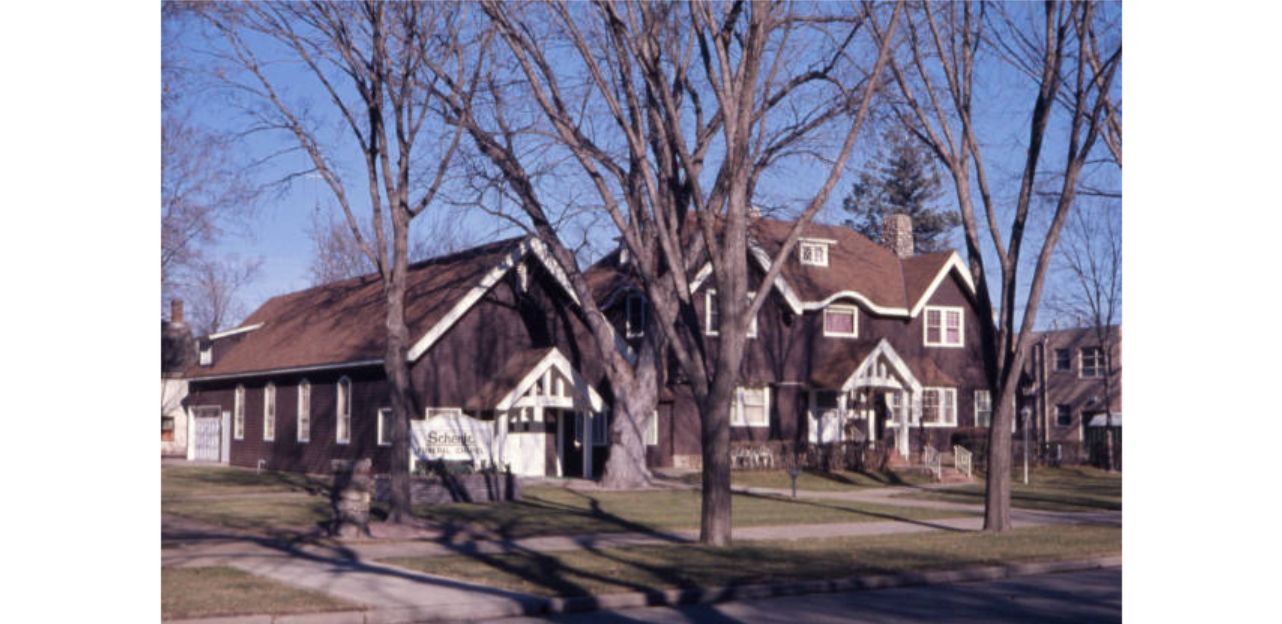
A.G. Schenk passed away in 1961, granting Floyd sole ownership of the funeral home. In 1963, Stanley G. Ray joined Floyd as a licensed funeral director and embalmer. Stan left Yankton in 1966 and returned in 1976, purchasing the business from Floyd Schenk the following year. Floyd passed in 1981. In 1982 Floyd’s mother Alice passed, leaving the property to his brother, Daniel W. Schenk. Stan and his wife Judy continued to lease the Schenk Family property until they moved the Ray Funeral Chapel to its present location at 2901 Douglas Ave, Yankton, in 1986.
Daniel W. Schenk passed in 1986, leaving the property to his son Dan C. Schenk. The United Church of Christ (Congregational), Yankton, SD, purchased the property in 1987, with the original intent that the land would become parking spaces. However, the property came with tenants – two renters with a lifetime entitlement to the property’s small stone cottage.
At that time, the funeral home attached to the house became U.C.C. administrative spaces, and the church continued to rent the apartments. Waterline breaks in 2014 and 2015 rendered the cottage, garage apartment, and two apartments in the house unsuitable for rental purposes. In 2018 another pipe burst, renewing the discussion of what to do next. The church board agreed to list it for sale in March 2019.
Tyler and I closed on the home in August 2019 and moved it to our land outside of Springfield, SD in April 2021. Our goal is to bring the house back as close to its original 1904 glory as possible. If anyone has any stories, photos, or information on our home, the builder, or the architect, please let us know. We’d love to hear from you! Additionally, we are documenting everything from the move to the restoration, so check back here and our 7 Arrow Facebook page often to see the transformation firsthand!
